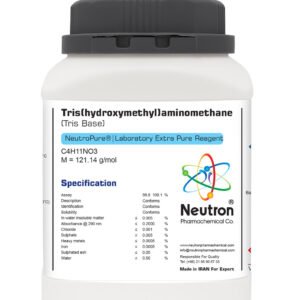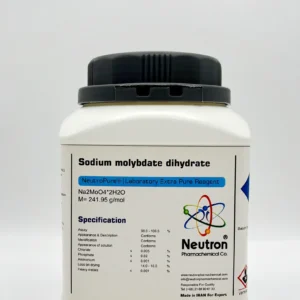اوره
| Formula | CH4N2O |
| Density | 1.34 g/cm3 |
| Molar mass | 60.06 g/mol |
| CAS number | 57-13-6 |
| HS code | 31021010 |
| EC number | 200-315-5 |
| Storage | at +15 °C to 30 °C |
| SDS | Available |
| RTECS | YR6250000 |
| Assay | 99.0 – 100.5 | % | |
| Description | Conforms | ||
| Identification | Conforms | ||
| Heavy metals | ≤ | 0.002 | % |
| Alcohol – insoluble matter | ≤ | 0.04 | % |
| Sulfate | ≤ | 0.01 | % |
| Chloride | ≤ | 0.007 | % |
| Residue on ignition | ≤ | 0.1 | % |
| Melting range | 132 -135 | °C | |
| Loss on drying | ≤ | 2 | % |
Urea is a white, crystalline organic compound widely used in laboratories, agriculture, and pharmaceutical industries. It serves as a nitrogen source and a building block in chemical synthesis.
🏭⚗️ Production
Urea is industrially produced by reacting ammonia with carbon dioxide under high pressure and temperature in the Bosch-Meiser process. It is purified and crystallized to yield solid urea.
🔬 Properties
The chemical formula is CO(NH₂)₂ with a molar mass of 60.06 g/mol. Urea appears as odorless, highly soluble crystals in water and is stable under normal conditions. It decomposes upon heating to release ammonia and is non-flammable.
🧪 Applications
Urea is widely used as a fertilizer, in pharmaceutical formulations, and as a raw material for producing resins and plastics. In laboratories, it acts as a protein denaturant and a reagent in biochemical assays.
⚠️ Safety
Urea is generally considered safe but can cause mild irritation to skin and eyes. Inhalation of dust may irritate the respiratory system. Standard protective equipment such as gloves and goggles is recommended when handling. It should be stored in a cool, dry place away from moisture and incompatible substances.





